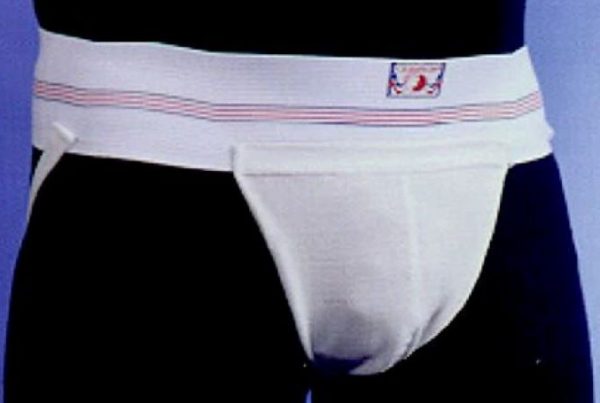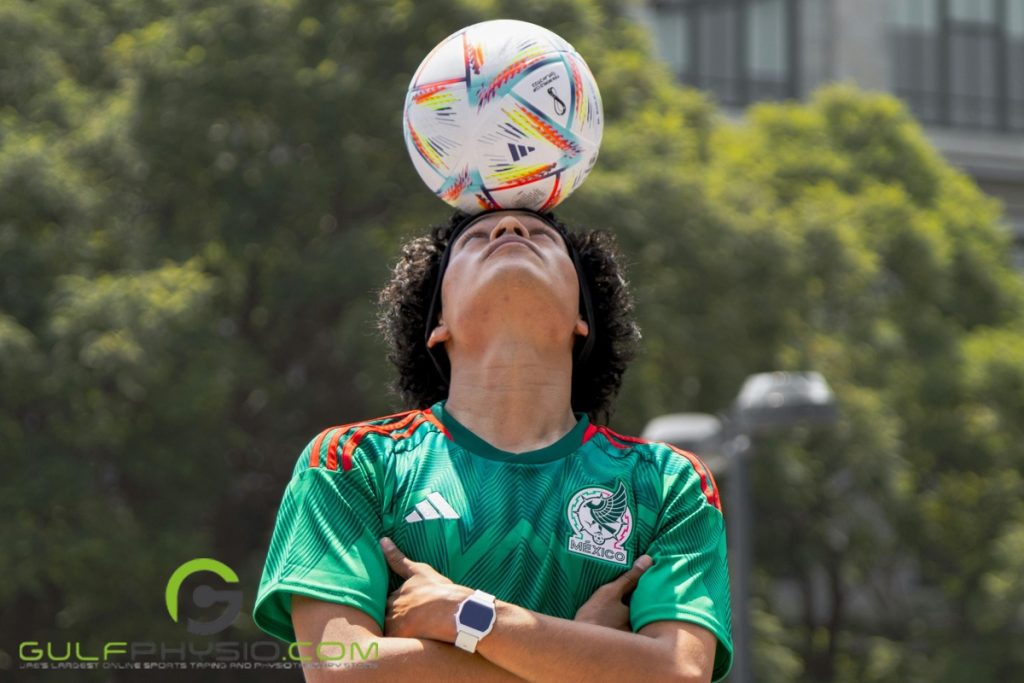
Being active is good for the mind, body, and soul. What better way to stay active than joining a sport or two? Now, you have so many sports activities to choose from. You can even take up several at once if you have the time. In our youth, we are even drawn to more physically inclined sports, such as contact sports.
However, it would be remiss to disregard the possible dangers of contact sports. Particularly, the prevalence of sports-related head injuries. In this article, you’ll learn the basics of head injuries and what you need to know like statistics and safety precautions.
Concussion
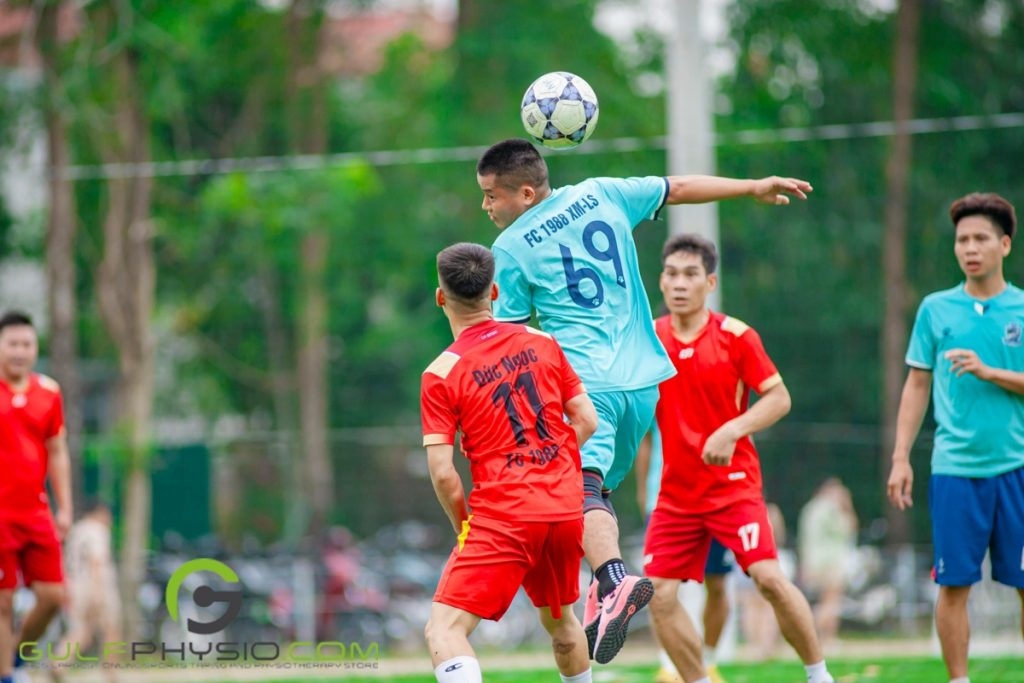
Worldwide, there are 56 million cases of concussions. Around ten (10) percent of those cases are sports-related head injuries. They are common head injuries, especially in contact sports such as:
- American football,
- Boxing
- Basketball
- Hockey
- Rugby
- Soccer
Concussions are a result of a direct blow to the head. Initially, this condition was underestimated since it was invisible. There are no outward signs of concussions. Therefore, they are considered mild injuries. Diagnosticians tend to go by their subtle symptoms alone.
Further studies have helped change people’s minds about the severity of this condition. Multiple sources state the long-term effects of multiple concussions in various contact sports. In turn, health practitioners and other professionals have paid closer attention to patients with concussion symptoms.
Diagnosis of Concussions
The symptoms of a concussion vary between cases and age groups. These symptoms include physical, cognitive, emotional, and behavioural symptoms. Patients are suspected to have a concussion if they exhibit one of the following symptoms:
- Amnesia
- Blurry vision
- Confusion or foggy feeling
- Dazed appearance
- Delayed response
- Dizziness or seeing stars (the second most frequent symptom)
- Drowsiness or fatigue
- Forgetfulness
- Headache (the most frequent symptom)
- Nausea
- Ringing in the ears
- Slurred speech
- Temporary loss of consciousness
- Vomiting
During the course of a sporting event, trainers and coaches must be vigilant. In the case of a concussion, they perform an assessment with apparatuses like the Pocket Concussion Recognition Tool. Medics on site should use more refined tools like the Sport Concussion Assessment Tools (SCAT, SCAT3, child SCAT3, etc.).
Athletes with concussions aren’t allowed back into sporting activities for the rest of the day to be safe. Around ten to twenty (10-20) percent of patients experience continual concussion symptoms weeks or months after the incident. Even ten (10) percent lose consciousness. Suspected concussion patients need continuous monitoring for potential complications.
Medical professionals suggest using diagnostic imaging like MRIs (Magnetic Resonance Imaging) or coronal CTs to count out organic lesions. These practices also give patients higher chances of avoiding lifelong damage like cerebral haemorrhage. MRI and head CTs help recognise bridging veins in the parietal region or hematomas close to the tentorium.
Discussion about Concussions
Recent studies on concussions show the seriousness of this condition when not treated properly over time. Having a history of concussions can increase your risk of having more by two to five (2-5) times. Succeeding concussions could even be more harsh with symptoms that last longer.
Athletes who have experienced multiple concussions in their careers manifest neuropsychological irregularities and smaller-scale anatomical brain damage. That build-up can cause brain atrophy, CTE, and other psychiatric and cognitive disorders later on in their lives. These include brain oedema and Parkinson’s disease.
Due to these reasons, proper awareness and assessment of this injury should be compulsory for athletes, coaches, and trainers. Neurosurgeons and sports medicine doctors should do the same when checking concussions and other sports-related head injuries.
Only recently have sports organizations established concussion management guidelines. A part of these guidelines includes comprehensive and strict rules for returning to sports. Some of these organizations include the following:
- The International Olympic Committee
- The International Rugby Board
- The International Ice Hockey Federation
- The Fédération Internationale de Football Association
Returning to Sports Following a Concussion
Players should only return to their respective sport when they no longer exhibit signs of a concussion. Each athlete must complete a return-to-play protocol to ensure they no longer have a concussion.
Every step of the protocol lasts at least twenty-four (24) hours or one (1) day. The procedure ends if the patient shows any symptoms. They’ll be asked to take a break and then return to the previous step to reevaluate.
The whole process usually takes a week to finish and get back to the player’s athletics. At the end, there will be a mandatory medical check-up. Players need to clear this up so they can return to their sport.
Acute Subdural Hematoma (ASDH)
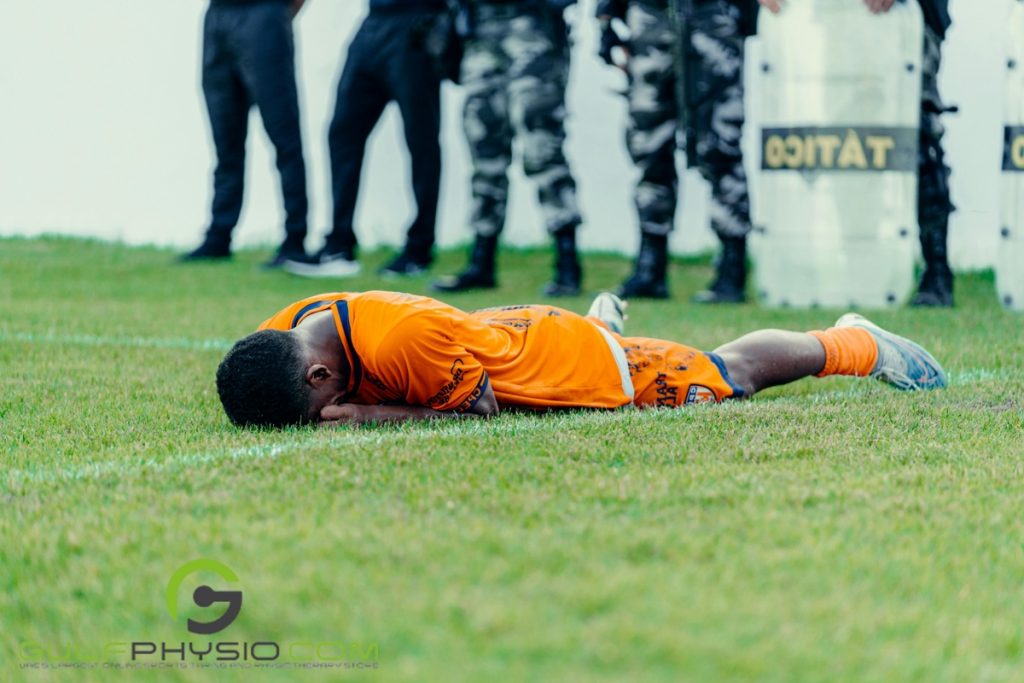
An acute subdural hematoma (ASDH) is described as a brain bleed or bleeding near the brain after head trauma. ASDHs from sports-related head injuries are usually classified as simple. Simple in this regard means it doesn’t involve bruising or cerebral contusions.
During contact sports, athletes are placed in various compromising positions. A player could accidentally send their teammate to the ground, leading to a blow to his occipital region. The sudden front-to-back pivot of the brain can disconnect it from the dura and even burst open bridging veins.
Such damages are more common among athletes who have experienced headaches and other preexisting head injuries. This is shown in numerous studies, including this one regarding high school students and their extracurricular judo activities.
Discussion about Acute Subdural Hematoma (ASDH)
The pervasiveness of ASDH in contact sports is very high. American football is one of them, with around ninety (90) percent of the injuries being ASDH in the US. In the United States, the number of cases rises annually. Other contact sports include the following worldwide:
- Boxing
- Judo
- Ice hockey
- Rugby
- Skiing
- Snowboarding
Most ASDH cases happen in schools, particularly in senior high schools. Cases per country depend on the most popular sport of the region. For instance, ASDH occurs most commonly among beginner and adolescent judo players in Japan. It’s due to them practising with older, tougher, and more advanced players during drills and practice.
Traumatic Cerebrovascular Disease (TCD)
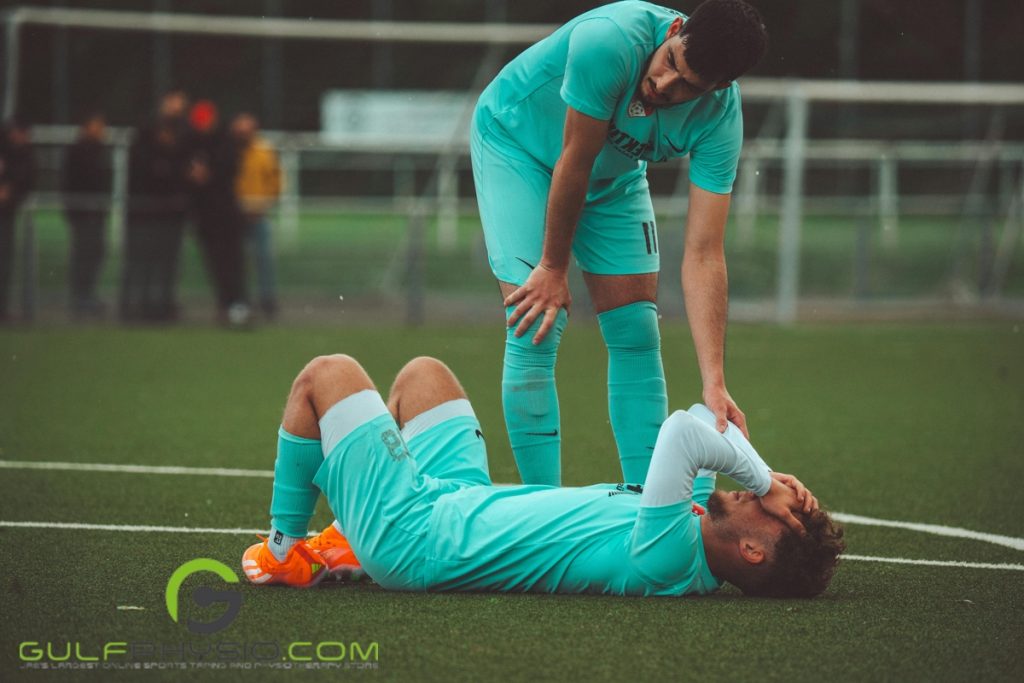
A traumatic cerebrovascular disease or TCD is another brain disease or injury resulting from a violent blow or jolt to the head. It interferes with the blood flow to the brain. Under this, you’ll also find cerebral infarction or ischemic stroke. In this case, the disruption of the blood flow to the brain is due to blood vessel problems.
It’s rare for something like cerebral infarction to occur during any sporting activity. Around 80 percent of cases have either an infarction or ischemia diagnosis. This is due to the tearing of the inner artery lining or arterial dissection. Most of these cases also only happen to male athletes.
Diagnosis of Traumatic Cerebrovascular Disease (TCD)
rterial dissections in this regard (both internal and common types) were typically caused by rotational impact and blunt force trauma. A head injury like this has a variety of symptoms including the ones listed below:
- Amaurosis
- Anterior neck pain
- Facial pain
- Headache
- Horner’s syndrome
- Middle cerebral artery infarction
- Transient ischemic attack
Several effective medical tests can diagnose arterial dissection like ultrasound, magnetic resonance angiography, and computed tomography (CT) angiography. Ultrasound is an exceptionally practical test for catching both internal and common carotid arteries as early as possible.
Discussion about Traumatic Cerebrovascular Disease (TCD)
One of the more notable instances of artery lining damage happened on a golf course. It was caused by rotational impact during a game of golf and affected the vertebral area. TCD, like many sports injuries that relate to the head and face, was also surveyed in several other sports:
- Bowling
- Judo
- Karate
- Kendo
- Rugby
- Scuba diving
- Soccer
- Taekwondo
- Tennis
- Winter sports
- Wrestling
- Yoga
Athletes who were previously diagnosed with arterial dissection are recommended to avoid active sports activities. Particularly, they shouldn’t be involved with sports that require excessive hyperextension and neck rotation.
Chronic Traumatic Encephalopathy (CTE)
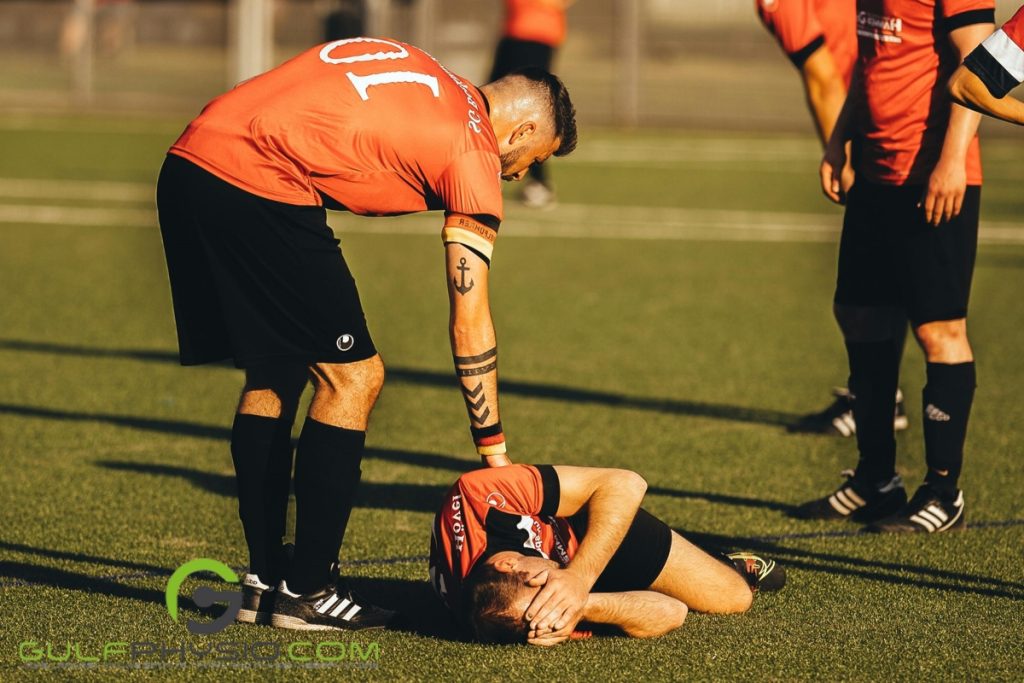
Chronic traumatic encephalopathy or CTE is a degenerative and progressive brain disorder. It’s caused by repeated traumatic head injuries. These injuries include numerous concussions from contact or collision sports activities over time.
One of the first cases of CTE was in 1928 when a boxer received multiple blows to the head. He developed punch drunk syndrome (another term for CTE) resulting from significant cognitive and motor impairment. However, the term CTE itself has only been used since the 1960s to label this overuse injury
Diagnosis of Chronic Traumatic Encephalopathy (CTE)
The initial symptoms take ten (10) years to appear since it takes several head injuries to be considered CTE. Early symptoms of CTE can be categorized into three main groups: mental, behavioural, and cognitive disorders. They include the symptoms below:
- Mental disorders
- Apathy
- Depression
- Irritability
- Suicidal attempts
- Suicidal ideation
- Behavioural disorders
- Disinhibition
- Impulse control disorders
- Violence
- Cognitive disorders
- Higher brain function disturbances
- Learning disabilities
- Memory disturbance
Progressive symptoms show in patients in their thirties and fifties (30s & 50s). At this stage, motor symptoms tend to occur like:
- Balance disability
- Dysarthria
- Extrapyramidal disorder
- Other speech abnormalities
During the late stages, brain atrophy starts in some areas of the brain. These include the basal ganglia, mammillary bodies, and the frontal and parietal lobes. Retaining spinal fluid in the septum pellucidum cavity is seen in affected patients as well.
Pathologists have also observed the buildup of the TAR DNA-binding protein-43 and tau protein in certain brain areas. These areas are as follows:
- Basal ganglia
- Brain stem
- Cerebellar dentate nucleus
- Frontal lobe
- Neuritis
- Temporal lobe
The development of CTE is not from concussions alone. Other traumatic head injuries can also lead to CTE. Research looking into the connection between pathogenesis and CTE is still inconclusive.
Discussion about Chronic Traumatic Encephalopathy (CTE)
Sports like the following have a high risk of concussions and other sports-related head injuries:
- American football
- Boxing
- Ice hockey
- Mixed martial arts
- Rugby
- Soccer
- Wrestling
Typically, it takes a while for medical professionals to realise potential CTE symptoms in athletes. Again, it can take years or decades for symptoms to be severe and noticeable enough
Can an Athlete Return to Sports Following Organic Brain Damage?
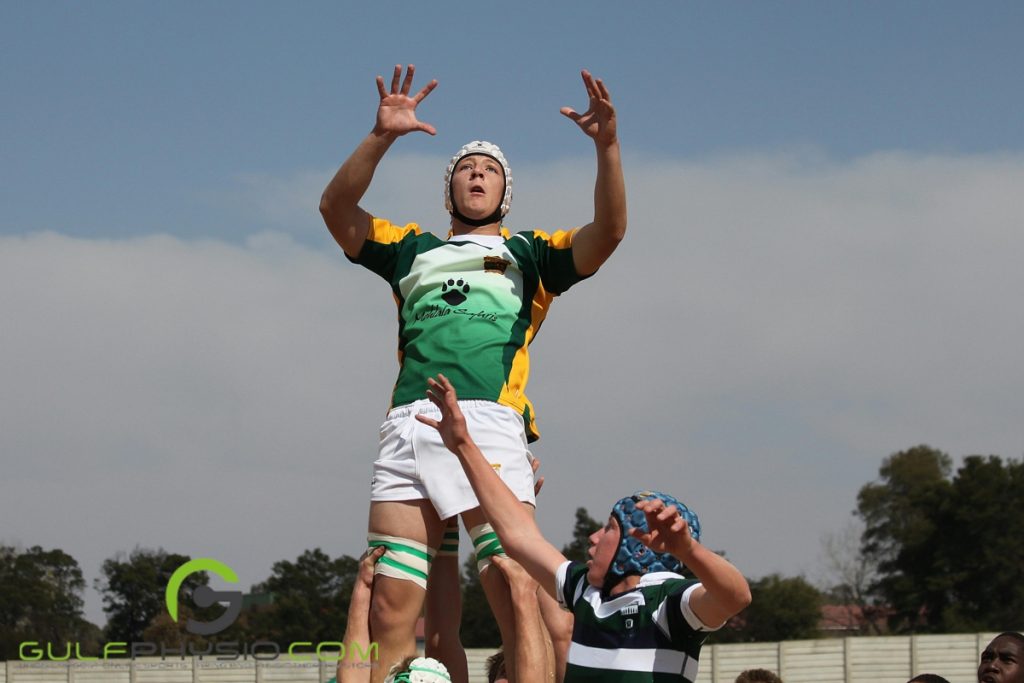
Athletes who have suffered an ASDH or organic brain damage are not supposed to go back to their respective sport. This rule should still be applied even when the patient recovers without lesions on his/her imaging.
Sports and medical professionals prioritise players’ safety, especially in high-risk contact sports. Players with a history of brain damage shouldn’t return to high-risk contact sports like the following:
- American football
- Boxing
- Karate
- Judo
- Ice hockey
- Snowboarding
- Soccer
- Sumo wrestling
In Conclusion
Proper head injury management should be at the forefront of any contact sports. Athletes, instructors, coaches, and medical professionals should be well-versed in head injury first aid and education like ukemi in judo. It’s important in high-risk sports involving adolescent and beginner players since they are more susceptible to severe head injuries.
Never underestimate the dangers of concussions. Players with suspected concussions shouldn’t be allowed back to their sporting activities. They should follow a structured protocol before heading back to their sport.
Medical and sports professionals should make sure that the patient is fully capable of returning to sport. Otherwise, it might exacerbate their condition even further. Moreover, neurosurgery is also an exceptional option for head injury management and prevention.



